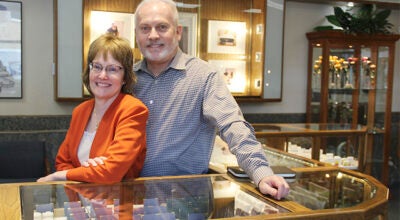Local diet, exercise workers welcome Blue Zones advice
Published 8:20 pm Saturday, September 26, 2009
Plant-based foods. Smaller portions. Exercise. Goal setting.
While some people are skeptical of the themes of the AARP/Blue Zones Vitality Project, local dietitians and fitness experts say they fit hand-in-hand with what they’ve always taught.
The project is giving them a tool this year to spread the message of healthy living — a tool that has many residents interested in wellness.
How is the Blue Zones philosophy different from other health advice?
Hy-Vee registered dietitian Amy Pleimling said she understands there are many avenues people can take in the area of diet and exercise.
“I get a handful of questions every day that I work here on nutrition,” she said. “It’s always good for people to ask to sort things out.”
But from talking to people in the store, she said she thinks the majority of people know what to do for health and wellness. They know they should be physically active.
The Vitality Project ties in with those goals, and many see its suggestions as simple ways to achieve long-sought goals, she said.
Albert Lea Medical Center dietitian Denise Arnold said she sees many patients who are involved with the Vitality Project who come in and say they want to make some health changes to their lives.
“They’re saying, ‘I’m learning this, and I want to become healthier,’” Arnold said. “They’re taking away the excitement of, ‘Hey I need to do something different, and this is giving me some ideas.’”
She said the project’s philosophies go hand-in-hand with what she counsels to her patients. She now incorporates many of the Blue Zones philosophies into her work.
“I bring it up quite a bit,” Arnold said. “Whether it’s the food concepts, eating healthy, I just really promote it.”
Pleimling said she does not see the Vitality Project or its concepts as just another fad diet. The program is based on natural lifestyle changes. It also incorporates other areas of life including purpose, faith and connections with others.
“We, as Hy-Vee dietitians, constantly are pushing the idea for people to actually grab onto that it’s a lifestyle change, versus a fad or diet,” Pleimling said. “In my opinion, the Blue Zones is a lifestyle change and fits very nicely with that.”
She said she’s sure there are some people who are confused and who misunderstand the themes of the Vitality Project, but the program is simply a tool.
Many of the themes that have been taught with the Vitality Project are in line with what she has been teaching over the years, she noted.
Anytime Fitness manager Sindy Dickey agreed.
“I think the Blue Zones just brought forward to everybody’s mind what they already know and gave them a community to do it with,” Dickey said. “Sometimes it’s hard to do things on our own.”
She said she, too, does not consider the Blue Zones’ message on food to be a diet.
“I consider it more of a healthy-eating plan,” she said.
What’s made it appealing?
Pleimling said the promotion of the project and the focus it has gained from local and national media have caught people’s eyes.
“I think it’s appealing,” she said. “Plus, I think it’s appealing for people to do it with other people, that there’s a group of people who are trying the same things as you are.”
If people understand that the Vitality Project is not only about gaining longer years, but happier years, too, that can be appealing as well, she said.
Arnold said she thinks the project will have a lasting effect in Albert Lea because it has been a project based on experts and research.
People are not just reading a book that somebody’s recommending or doing another fad diet, she said. The whole community has gotten involved.
“I think they will be able to fall back on these concepts time and time again,” she added.
Dickey said she thinks people who are open to listening to what Blue Zones is about are more likely to understand its suggestions.
“If they’re open to listening to what the Blue Zones is about, they get it,” she said. “It’s the people who want it all summed up in one sentence, they don’t get it.”
Dickey said most diet plans fail because they’re not about small lifestyle changes.
“People will go out and make some drastic change and go on and get on some diet,” she said. “They can only handle that for so long.
“What Blue Zones is offering is a natural plan. It’s the extreme plans that don’t work.”
Bill Villarreal, personal trainer at the Albert Lea Family Y, has heard many positive comments from people who are enrolled in the Vitality Project.
“It doesn’t seem like there’s probably as many involved in it as there should be,” he said.
He noted he did not sign on with the project because he thinks he’s already doing many things for his health.
“I’m all for it, I’m just so busy doing it already,” Villarreal said.
While he said he doesn’t know a whole lot about the project — other than what he has learned from Pleimling and people at the Y — he noted he thinks many people need more than just natural movement, suggested by the project, to be healthy.
“When you walk, you plateau,” he said. People need to incorporate other elements into their routines as well.
To skeptics of the Blue Zones philosophy, Arnold issued a challenge: “They don’t have to do everything gung-ho. It can be one step at a time. Maybe make some dietary changes to start with, some spiritual changes. Look at your life and then look at what you can do next.”



